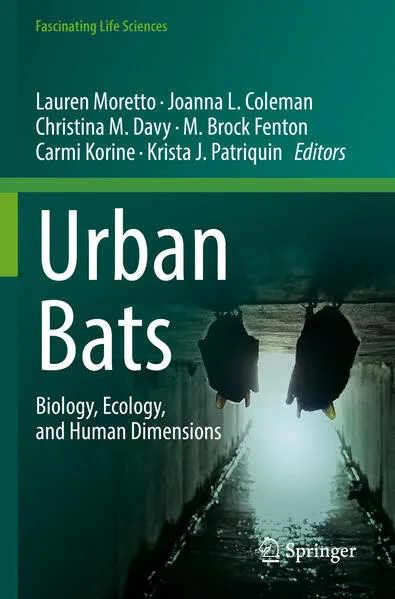
- Publikationen ca: 2
- Buchbewertungen ca: 1
- Fragen & Antworten
Lauren / Coleman Moretto
Joanna L. Coleman is an Assistant Professor at City University of New York-Queens College. She is also a core member of the Human Dimensions Working Group and the Co-Chair of the Bat Trade Working Group, within the IUCN Species Survival Commission, Bat Specialist Group. Her applied and interdisciplinary research agenda uses ecology and social science and to mitigate biodiversity loss and promote sustainability on an increasingly urban planet.
M. Brock Fenton, Professor Emeritus at Western University in Ontario, Canada, uses bats to explore the interfaces between animal behaviour, ecology and evolution. His research involves different aspects of the biology of bats using a combination of field and laboratory experiments and observations in settings ranging from different locations in Canada to a variety of sites in the tropics and subtropics.
Christina M. Davy is a Conservation Ecologist based at Carleton University, where she and her students study the impacts of rapid environmental change on endangered wildlife, including bats. She is particularly interested in understanding bats’ behavioral and genetic responses to habitat modification, including urbanisation, and the selective impacts of pathogens on bat behavior and population viability.
Carmi Korine is a Professor at Ben-Gurion University of the Negev, Israel. Carmi is studying the physiological ecology of bats, a discipline that explores, in an ecological and evolutionary context, the ways in which animals function in response to their natural environments. Currently, Carmi’s research explores the effects of anthropogenic disturbances on conservation ecology of desert-dwelling bats.
Krista J. Patriquin is an Adjunct Professor at Saint Mary’s University, and Research Coordinator with the Sable Island Institute, both in Nova Scotia, Canada. Broadly, her work investigates how organisms respond to change, including human-induced change. Most of this work has focused on foraging behaviour and conservation of bats in myriad environments, including urban parks.
Urban Bats
The Anthropocene is the “age of human influence”, an epoch well known for its urban impact. More than half of all people already live in cities, and this proportion is expected to rise to almost 70 percent by 2050. Like other species in urban areas, bats must contend with the pressures of profound and irreversible land cover change and overcome certain unique challenges, such as the high density of roads, lights, glass, and free-ranging domestic animals.
Urban Bats
The Anthropocene is the “age of human influence”, an epoch well known for its urban impact. More than half of all people already live in cities, and this proportion is expected to rise to almost 70 percent by 2050. Like other species in urban areas, bats must contend with the pressures of profound and irreversible land cover change and overcome certain unique challenges, such as the high density of roads, lights, glass, and free-ranging domestic animals.

